A comprehension task to use when learning about Brooke Boney.
This teaching resource profiles Gamilaroi woman and Australian journalist Brooke Boney.
Use the drop-down menu to choose between the PDF or Google Slides version.
Updated: 18 May 2023
A comprehension task to use when learning about Brooke Boney.
Editable: Google Slides
Non-Editable: PDF
Pages: 1 Page
Grades: 4 - 6
By the end of year, read and comprehend informational texts, including history/social studies, science, and technical texts, in the grades 4-5 text complexity band proficiently, with scaffolding as needed at the high end of the range.
Read grade-level text with purpose and understanding.
Use context to confirm or self-correct word recognition and understanding, rereading as necessary.
Determine or clarify the meaning of unknown and multiple-meaning words and phrases based on grade 4 reading and content, choosing flexibly from a range of strategies.
By the end of the year, read and comprehend informational texts, including history/social studies, science, and technical texts, at the high end of the grades 4-5 text complexity band independently and proficiently.
Read grade-level text with purpose and understanding.
Use context to confirm or self-correct word recognition and understanding, rereading as necessary.
Determine or clarify the meaning of unknown and multiple-meaning words and phrases based on grade 5 reading and content, choosing flexibly from a range of strategies.
Use context (e.g., the overall meaning of a sentence or paragraph; a word's position or function in a sentence) as a clue to the meaning of a word or phrase.
Read closely to determine what the text says explicitly and to make logical inferences from it; cite specific textual evidence when writing or speaking to support conclusions drawn from the text.
Developing and sustaining foundational language skills: listening, speaking, reading, writing, and thinking--self-sustained reading. The student reads grade-appropriate texts independently. The student is expected to self-select text and rea...
Use context within and beyond a sentence to determine the relevant meaning of unfamiliar words or multiple-meaning words;
Developing and sustaining foundational language skills: listening, speaking, reading, writing, and thinking--self-sustained reading. The student reads grade-appropriate texts independently. The student is expected to self-select text and rea...
Establish purpose for reading assigned and self-selected texts;
Make inferences and use evidence to support understanding;
Monitor comprehension and make adjustments such as re-reading, using background knowledge, asking questions, and annotating when understanding breaks down.
Describe personal connections to a variety of sources, including self-selected texts;
Write responses that demonstrate understanding of texts, including comparing and contrasting ideas across a variety of sources;
Use text evidence to support an appropriate response;
Interact with sources in meaningful ways such as notetaking, annotating, freewriting, or illustrating;
Discuss specific ideas in the text that are important to the meaning.
Use context within and beyond a sentence to determine the relevant meaning of unfamiliar words or multiple-meaning words;
Developing and sustaining foundational language skills: listening, speaking, reading, writing, and thinking--self-sustained reading. The student reads grade-appropriate texts independently. The student is expected to self-select text and rea...
Establish purpose for reading assigned and self-selected texts;
Make inferences and use evidence to support understanding;
Monitor comprehension and make adjustments such as re-reading, using background knowledge, asking questions, and annotating when understanding breaks down.
Describe personal connections to a variety of sources, including self-selected texts;
Write responses that demonstrate understanding of texts, including comparing and contrasting ideas across a variety of sources;
Use text evidence to support an appropriate response;
Interact with sources in meaningful ways such as notetaking, annotating, freewriting, or illustrating;
Discuss specific ideas in the text that are important to the meaning.
Developing and sustaining foundational language skills: listening, speaking, reading, writing, and thinking--self-sustained reading. The student reads grade-appropriate texts independently. The student is expected to self-select text and read indepe...
Use context such as definition, analogy, and examples to clarify the meaning of words;
Establish purpose for reading assigned and self-selected text;
Monitor comprehension and make adjustments such as re-reading, using background knowledge, asking questions, and annotating when understanding breaks down.
Use text evidence to support an appropriate response;
Write responses that demonstrate understanding of texts, including comparing sources within and across genres;
Culture. The student understands the role of heroes in shaping the culture of communities, the state, and the nation. The student is expected to:
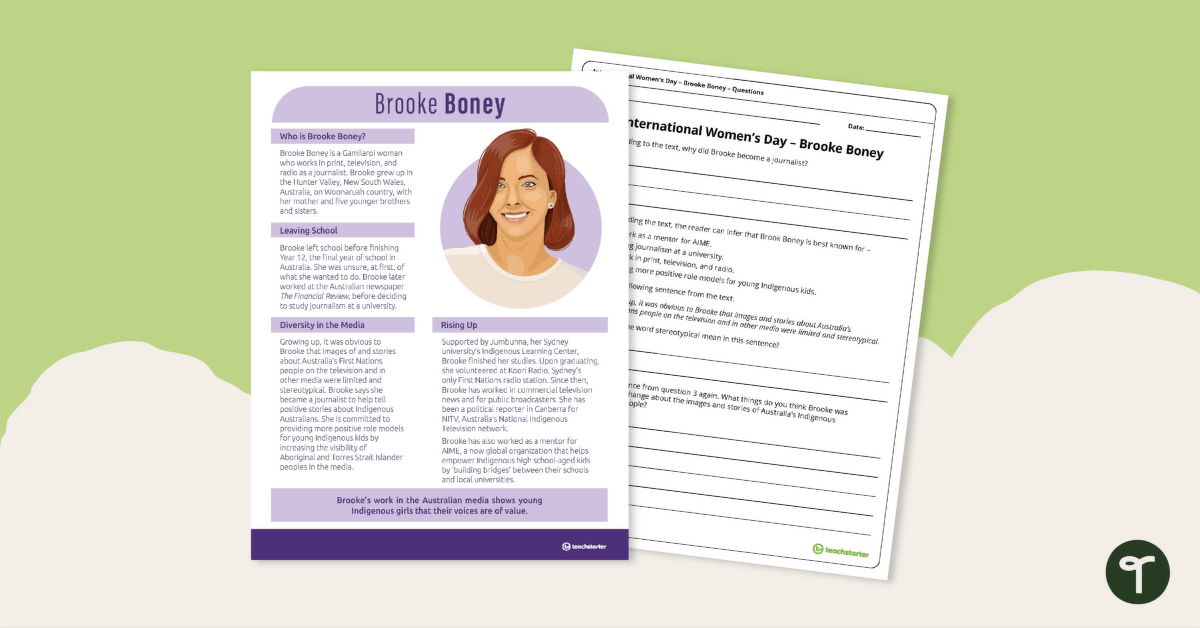
A comprehension task to use when learning about Brooke Boney.
This teaching resource profiles Gamilaroi woman and Australian journalist Brooke Boney.
Use the drop-down menu to choose between the PDF or Google Slides version.
By the end of year, read and comprehend informational texts, including history/social studies, science, and technical texts, in the grades 4-5 text complexity band proficiently, with scaffolding as needed at the high end of the range.
Read grade-level text with purpose and understanding.
Use context to confirm or self-correct word recognition and understanding, rereading as necessary.
Determine or clarify the meaning of unknown and multiple-meaning words and phrases based on grade 4 reading and content, choosing flexibly from a range of strategies.
By the end of the year, read and comprehend informational texts, including history/social studies, science, and technical texts, at the high end of the grades 4-5 text complexity band independently and proficiently.
Read grade-level text with purpose and understanding.
Use context to confirm or self-correct word recognition and understanding, rereading as necessary.
Determine or clarify the meaning of unknown and multiple-meaning words and phrases based on grade 5 reading and content, choosing flexibly from a range of strategies.
Use context (e.g., the overall meaning of a sentence or paragraph; a word's position or function in a sentence) as a clue to the meaning of a word or phrase.
Read closely to determine what the text says explicitly and to make logical inferences from it; cite specific textual evidence when writing or speaking to support conclusions drawn from the text.
Developing and sustaining foundational language skills: listening, speaking, reading, writing, and thinking--self-sustained reading. The student reads grade-appropriate texts independently. The student is expected to self-select text and rea...
Use context within and beyond a sentence to determine the relevant meaning of unfamiliar words or multiple-meaning words;
Developing and sustaining foundational language skills: listening, speaking, reading, writing, and thinking--self-sustained reading. The student reads grade-appropriate texts independently. The student is expected to self-select text and rea...
Establish purpose for reading assigned and self-selected texts;
Make inferences and use evidence to support understanding;
Monitor comprehension and make adjustments such as re-reading, using background knowledge, asking questions, and annotating when understanding breaks down.
Describe personal connections to a variety of sources, including self-selected texts;
Write responses that demonstrate understanding of texts, including comparing and contrasting ideas across a variety of sources;
Use text evidence to support an appropriate response;
Interact with sources in meaningful ways such as notetaking, annotating, freewriting, or illustrating;
Discuss specific ideas in the text that are important to the meaning.
Use context within and beyond a sentence to determine the relevant meaning of unfamiliar words or multiple-meaning words;
Developing and sustaining foundational language skills: listening, speaking, reading, writing, and thinking--self-sustained reading. The student reads grade-appropriate texts independently. The student is expected to self-select text and rea...
Establish purpose for reading assigned and self-selected texts;
Make inferences and use evidence to support understanding;
Monitor comprehension and make adjustments such as re-reading, using background knowledge, asking questions, and annotating when understanding breaks down.
Describe personal connections to a variety of sources, including self-selected texts;
Write responses that demonstrate understanding of texts, including comparing and contrasting ideas across a variety of sources;
Use text evidence to support an appropriate response;
Interact with sources in meaningful ways such as notetaking, annotating, freewriting, or illustrating;
Discuss specific ideas in the text that are important to the meaning.
Developing and sustaining foundational language skills: listening, speaking, reading, writing, and thinking--self-sustained reading. The student reads grade-appropriate texts independently. The student is expected to self-select text and read indepe...
Use context such as definition, analogy, and examples to clarify the meaning of words;
Establish purpose for reading assigned and self-selected text;
Monitor comprehension and make adjustments such as re-reading, using background knowledge, asking questions, and annotating when understanding breaks down.
Use text evidence to support an appropriate response;
Write responses that demonstrate understanding of texts, including comparing sources within and across genres;
Culture. The student understands the role of heroes in shaping the culture of communities, the state, and the nation. The student is expected to:

We create premium quality, downloadable teaching resources for primary/elementary school teachers that make classrooms buzz!
Would you like something changed or customised on this resource? While our team makes every effort to complete change suggestions, we can't guarantee that every change will be completed.
Did you spot an error on this resource? Please let us know and we will fix it shortly.
Are you having trouble downloading or viewing this resource? Please try the following steps:
If you are still having difficulty, please visit the Teach Starter Help Desk or contact us .

A 24-slide editable PowerPoint presentation about silent letters.

A worksheet to use in the classroom when identifying multiple-meaning words.

A teaching resource to help consolidate the students’ knowledge of punctuation.

Individual student and whole class trackers using the Language Common Core Standards.

A poster to remind your students to add detail and description to their writing to bring their characters to life.
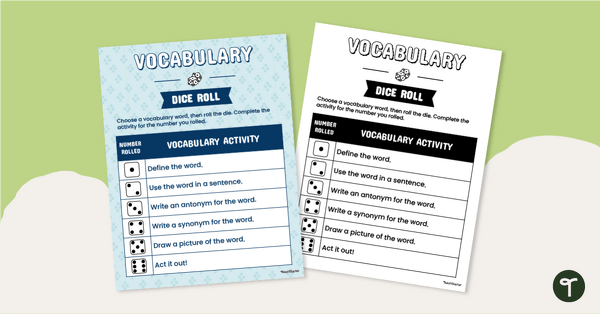
Use our ‘Dice Roll’ Content Vocabulary Activity as an opportunity to help your students grow their vocabulary skills in the classroom.
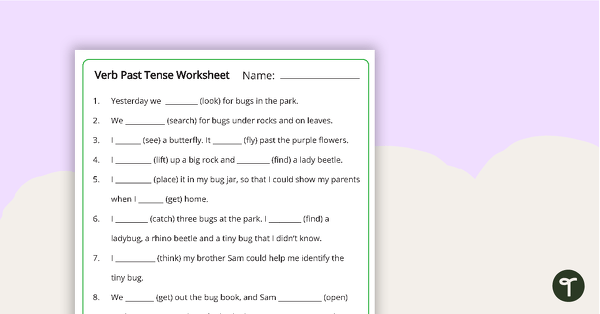
A worksheet with simple and irregular past tense verbs added to complete the sentences.
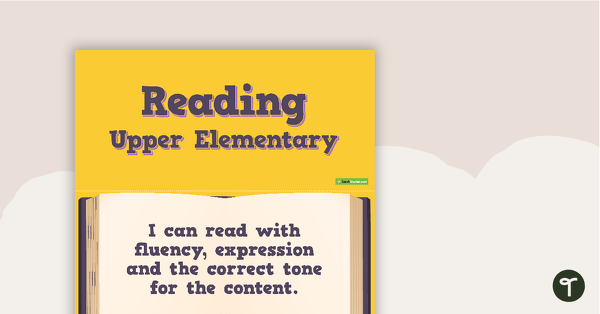
A set of 26 'I can' statement cards focusing on reading for upper elementary.
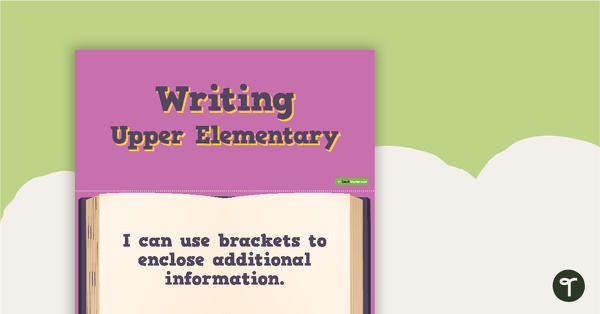
A set of 25 'I can' statement cards focusing on writing for upper elementary.
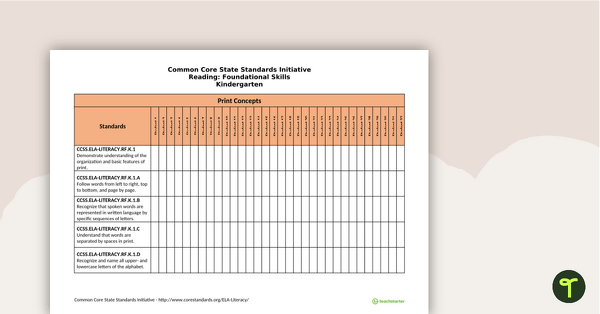
Individual student and whole class trackers using the Reading: Foundational Skills Common Core Standards.
0 Comments
Write a review to help other teachers and parents like yourself. If you'd like to request a change to this resource, or report an error, select the corresponding tab above.